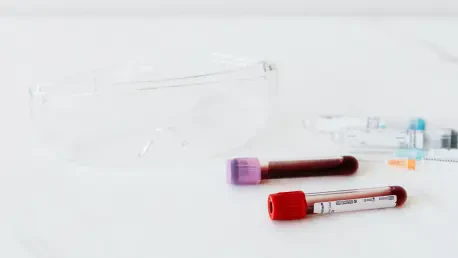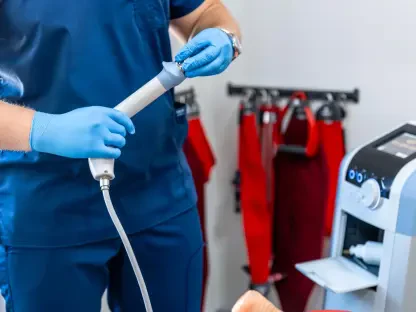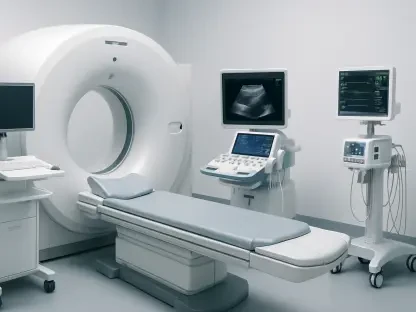In a groundbreaking advancement, researchers have introduced a less invasive, cost-effective solution for diagnosing Alzheimer’s disease, promising to transform how the condition is detected and treated. Historically, diagnosing Alzheimer’s has been a challenging and intricate process, heavily reliant on expensive and invasive methods such as PET scans and lumbar punctures. While effective, these procedures have been fraught with accessibility challenges and discomfort, limiting widespread adoption and timely diagnosis.
A recent innovation in medical science, underscored by Mayo Clinic’s validation, has presented a revolution in the form of a simple blood test that promises to change the diagnostic landscape. With the potential to impact millions of individuals worldwide, this development is particularly significant as Alzheimer’s prevalence is projected to rise, posing a substantial healthcare challenge.
A Revolutionary Shift in Diagnostic Methodologies
Simplicity and Accessibility
The new blood test stands as a testament to the strides made in medical technology, reducing the need for costly and physically taxing diagnostic procedures. Unlike traditional methods, which often deter patients due to their invasiveness and expense, the blood test offers a convenient alternative. By detecting Alzheimer’s-related toxic proteins in the brain with impressive sensitivity and specificity, it opens the door for early and accurate diagnosis.
This means that healthcare providers, ranging from clinic physicians to specialists in rural areas, can now easily administer this test. This democratization of diagnostic tools represents a critical shift in healthcare, ensuring that patients can receive timely interventions without the burden of traveling long distances or incurring significant out-of-pocket expenses.
Application Across Demographics
The Mayo Clinic researchers rigorously tested the blood test, analyzing data from nearly 500 patients exhibiting various cognitive impairments. This diverse cohort, aged between 32 and 89 years, included individuals with typical and atypical forms of Alzheimer’s, Lewy body dementia, and vascular cognitive impairment. The findings highlighted the test’s universality and adaptability across a wide demographic, irrespective of age or cognitive condition.
With a sensitivity of 95% and a specificity of 82%, the test demonstrated robust reliability, capable of accurately diagnosing Alzheimer’s while differentiating it from other forms of dementia. Such efficacy not only underscores the innovation’s scientific validity but also its capacity to address a pressing need in cognitive healthcare, heralding a new era in personalized medicine.
The Urgency of Early Diagnosis
Addressing Public Health Challenges
As Alzheimer’s rates continue to climb, the public health implications are profound, demanding new strategies and solutions for diagnosis and management. The simplicity of the blood test aligns well with these urgent needs, as its accessibility could lead to earlier detection and, consequently, improved patient outcomes. This innovation addresses a critical gap, offering a scalable solution that can be integrated into existing healthcare models without causing a financial strain.
FDA Commissioner Dr. Martin Makary articulated this urgency, emphasizing the need for accessible diagnostic tools to mitigate the impending healthcare crisis posed by the rising prevalence of Alzheimer’s. By equipping providers with easy-to-use diagnostic instruments, the healthcare system is better positioned to manage and ultimately reduce the burden of this debilitating disease.
Economic and Procedural Implications
The financial and procedural benefits of the blood test are considerable, offering a paradigm shift not just in terms of patient care but also from an economic standpoint. By reducing reliance on costly imaging and invasive tests, healthcare systems can reallocate resources more efficiently, potentially fostering greater innovation in Alzheimer’s treatment and care. Patients, on the other hand, are spared the expense and physical discomfort associated with conventional diagnostic methods, facilitating a more humane and patient-centric approach to care.
Furthermore, widespread adoption of the blood test could lead to significant savings at both the individual and systemic levels, ultimately enhancing healthcare accessibility and equity. This shift could play a pivotal role in addressing the socioeconomic disparities that often characterize healthcare systems, particularly in rural or underserved regions.
The Future of Alzheimer’s Diagnostics
Advancing Healthcare Goals
The transformative power of the new blood test lies not only in its potential to streamline Alzheimer’s diagnostics but also in its alignment with broader healthcare objectives. By lowering financial and procedural barriers, this advancement facilitates improved patient outcomes and broadens access to diagnostics, which is crucial in the fight against Alzheimer’s. As this technology continues to gain traction, it offers hope for more inclusive and effective healthcare solutions that prioritize patient well-being.
This milestone in diagnostic technology signifies a shift toward a more proactive and holistic approach to managing cognitive impairments. Such a shift is needed to keep pace with the evolving demands and ongoing battle against Alzheimer’s, setting a foundation for future advancements that can further revolutionize patient care and management strategies.
Looking Ahead
Reflecting on this significant development, it is clear that the implications of the blood test extend far beyond immediate diagnostic capabilities. Future considerations might include integrating this test with emerging therapies and interventions, offering a comprehensive approach to combating Alzheimer’s at various stages. As research continues to unfold, this innovation lays the groundwork for new breakthroughs and improvements in patient-centric care, reshaping the landscape of neurological health.
Ultimately, the integration of such technologies into everyday healthcare practice represents a pivotal moment in the ongoing quest to combat Alzheimer’s disease. As medical professionals and researchers build upon these advancements, there is an opportunity to foster a future where early diagnosis and effective management are widely accessible, reshaping the narrative around one of modern medicine’s most challenging conditions.









